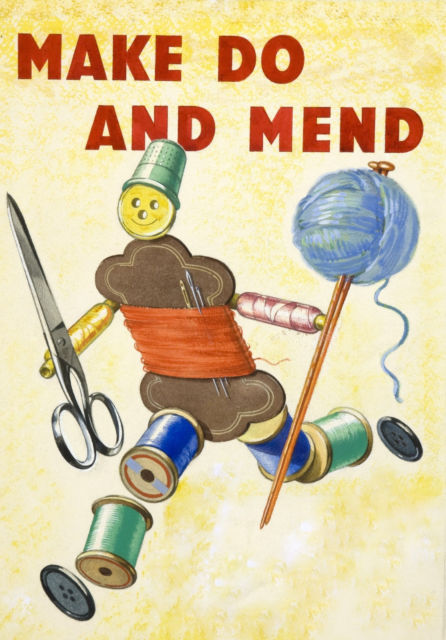
0800 377 7507
Get in touchMake do and mend to reduce what you spend
We’re all familiar with the wartime slogan that urged people to get the most out of the things they already had – “Make Do and Mend”.
Though the saying had been around since the First World War, it was formalised in 1943 when the British Ministry of Information issued a pamphlet giving advice on being thrifty yet stylish at the height of rationing.
We might not quite be ready to make “pretty decorative patches” to cover holes in clothes, but these days many of us are keen to recycle more and reduce our waste. Make do and mend is a very sensible principle to live by.
Here are some simple ideas for breathing new life into your old things!
It’s all in the jeans
How many of us have at least one pair of jeans lying around that we won’t be wearing again in a hurry? Denim is one of the few fabrics that actually improves with age, as it softens over time and can take a healthy bit of wear and tear. Plus, having been popular for well over a century, it’s a look that isn’t likely to go out of fashion any time soon.
Turning old pairs of jeans into unique and quirky home decor items needn’t require serious sewing skills. You hardly need to sew at all to turn the hems from a few pairs of old jeans into coasters. Simply trim the edges of the seams as closely as possible, then apply hot glue with a glue gun and roll the seams tightly to form a spiral. Glue down the end and allow to set for several hours before using.
If you have some basic sewing skills, you could go a little more ambitious and create a denim patchwork cushion cover or even a quilt.
Darn It
The idea of darning socks around a fire is almost an ‘olden days’ cliché, but darning is simpler than you think, and can be a great way to bring old knitwear back to life.
It’s worthwhile investing in a darning egg (they are normally just a couple of pounds from a haberdashery shop or online). Place damaged item over the darning egg inside out, then with a thick thread or wool that is as close in weight and texture to the item as possible, start a centimetre or two away from the edge of the hole, and weave over the hole. Create several large stitches going in one direction, then turn the item perpendicular and thatch across. You can also do this to reinforce worn areas in the heel or toes of socks before a hole springs.
Make your own
Instead of shelling out for pricey (and often chemical-laden) household products, why not try making your own?
Your skin will thank you for a simple face mask made from porridge oats and honey, and your hair will love an egg-white rinse. You can replace most of your cleaning products with an all-purpose solution of ½ cup of white vinegar, ⅓ cup of baking soda with two litres of water.
